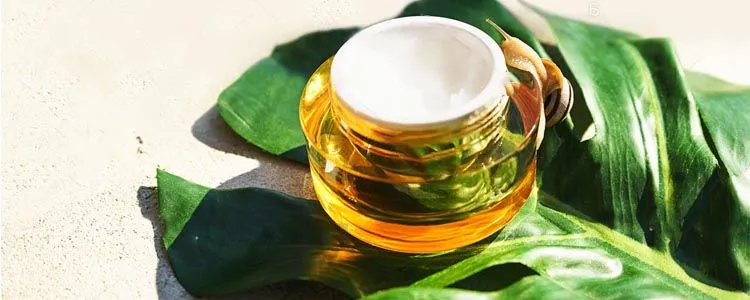
If we talk about allantoin, it is likely that you find it a strange compound and you do not know its uses. However, if we relate it to snail slime, you will surely be connecting the dots, since it is a product that has been in fashion for many years.
Although a large number of revitalizing creams they claim to be made with snail slime, it is not entirely true. What we apply to the skin is far from the slime extracted from animals, something that the vast majority would not be willing to do. It actually uses isolated active ingredient known as allantoin.
This compound is not only of animal origin but is extracted from different plants such as aloe veracomfrey chamomile, lotus or yam. It has been used for many years, going back even to ancient Egypt.
The allantoin it is widely considered as an ingredient with different properties, safe to use and very practical for skin care. In this article we will analyze where it is extracted from, its uses and medicinal properties.
Table of Contents
Where allantoin is obtained from
The allantoin is a chemical compound with the formula C4H6N4Or3. Some of these nitrogen-containing organic compounds can be obtained from some plants and some animals, such as case of the snail or in the urine of some mammals.
Today, the extraction of allantoin does not require having to use animal sources, but can synthesize in the laboratory obtaining the same properties. It can be synthesized at the chemical level in bulk and is equal to the natural product, being safe, non-toxic, compatible with raw materials used for the manufacture of gels and cosmetics.
Medicinal properties of allantoin
Allantoin has interesting medicinal properties for application on the skin. It is a natural healing agent and facilitates the detachment of dead cells (chemical debrideer), increasing the growth rate of healthy tissue and improving its hydration.
That is why the comfrey, a plant from which allantoin can also be obtained, has beneficial properties for the skin. In the books of Dioscorides it was already mentioned its healing effects that have currently been approved by the medical community.
Main effects
- Moisturizing effects– increases the absorption of moisture through the epidermis.
- Reduces dryness– activates cell regeneration and reduces moisture loss (prevents dryness).
- Limits flaking– stimulates natural exfoliation in the outer layer of the skin.
- Sunscreen: reduces harmful epheth from the sun’s rays and prevents cellular oxidation.
- Oily skin– reduces the formation of acne and pimples,
- Cell repair: increases cell proliferation and the formation of new tissues, favoring healing.
- Fabric softener: reduces irritation of the and has anti-inflammatory effect.
Skin care
Allantoin is valued for its moisturizing action, but it does not do so in the same way that other moisturizing products act. Although it favors the absorption of moisture, allantoin is valued for reducing the stinging effect of dry skin, so it has soothing properties and softens the skin.
In addition, in the face of the damage we do when scratching, mainly due to dry skin, allantoin favors the process of renewal of epithelial cells, helping the body to remove dead skin cells in the upper layers of the skin and replace them with new ones.
The natural moisture production of allantoin prevents peeling of the skin by removing dead skin.
Uses of allantoin in cosmetics
- Bath soaps: bath gels, intimate products, moisturizing powders and wipes.
- Body care: revitalizing tonics and moisturizers.
- Care of hands: gels, lotions, creams.
- After shave shave: shaving creams, gels and lotions.
- Oral preparations: pastes and mouthwashes.
- Baby care: prevention of diaper rash, bath products, lotions and creams.
- Lip hydration: sticks, petroleum jelly and creams to avoid “cut lips”.
- Sunscreen: sunscreens, aftersuns and bronzers.
- Hair products: shampoos, tonics.
Possible contraindications
In some creams for application on the skin that we can find in the pharmacy, we observe in the package leaflet some recommendations for application and possible contraindications of allantoin (because it is the main compound).
Some of these side effects occur in very rare cases, but can happen, being the following:
- Hypersensitivity to the active ingredients.
- Presence of tuberculous or syphilitic processes, viral infections.
- Ulcers, atrophic skin diseases, perioral dermatitis and rosacea.
In general, it is not recommended to use in open wounds of a deep nature or in children under 4 months. In addition, it should not be used in dermatological processes of infectious origin.
